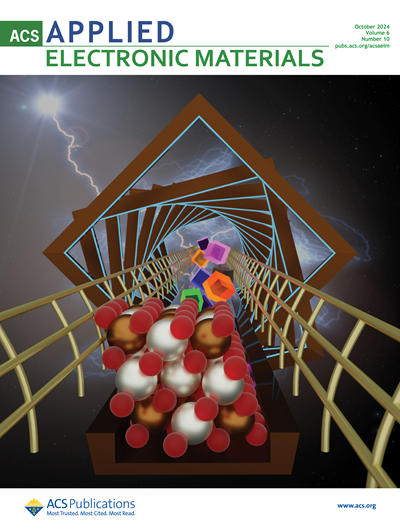The organoleptic and nutritional characteristics of innovative high-fiber khalas date-based bar
IF 4.7
3区 材料科学
Q1 ENGINEERING, ELECTRICAL & ELECTRONIC
引用次数: 0
Abstract
Making functional and nutritionally balanced date bars is of innovative concern. The current study intends to create a novel high-fiber and nutritious Khalas date-based bar (KDBB). The proximate composition, mineral contents, sugar profile, amino and fatty acids profile, volatiles and phytochemicals, antioxidant activity, and an in vitro digestion of protein and carbohydrates for bar formula containing 50% Khalas dates (KD) were investigated. Results indicated that protein, fat, ash, fiber, available carbohydrates, and vitamin C were 9.34, 4.93, 2.05, 8.01, 54.04 g 100 g-1, and 16.67 mg, respectively. Potassium, magnesium, phosphorus, and calcium were present in abundance. Sucrose had the highest sugar concentration at 246.35 mg g-1. Total phenolic content (TPC) was 547.19 mg gallic acid equivalent 100 g-1, giving 719.39 and 815.98 µmol of Trolox equivalent (TE) 100 g-1 for 2,2-diphenylpicrylhy-drazyl radical scavenging activity (DPPH-RSA) and 2,2’-azino-bis(3-ethylbenzthiazoline-6-sulfonic acid) (ABTS)-RSA, respectively. Total carotenoids, flavonoids, and flavonols were 327.19 mg 100 g-1, 998.25 mg quercetin equivalent 100 g-1, and 749.57 mg QE 100 g-1, respectively. The highest discovered phenolics, flavonoids, and isoflavone were pyrocatechol (10249.73 μg g-1), catechin (193.50 μg g-1), and daidzein (18.77 μg g-1), respectively. Lysine was the highest among the essential amino acids. Saturated and unsaturated fatty acids were 43.73% and 56.27%, respectively. The omega-6 fatty acid, cis-8,11,14-eicosatrienoic, was predominant with a 31.08% valuation. The gas chromatography–mass spectrometry analysis identified 17 compounds, with a predominant presence of 9,12-octadecadienoyl chloride (38.13 g 100 g-1). The glycemic index (GI) of KDBB was 39.97, which was lower than KD’s score (54.12). In conclusion, prepared KDBB could present a good idea for consuming dates and the based products with high fiber content and lower GI. Scaling up such products could be helpful to health-conscious individuals.创新型高纤维哈拉斯红枣棒的感官和营养特性
制作功能性和营养均衡的红枣棒是一项创新。目前的研究旨在制作一种新型的高纤维和营养丰富的哈拉斯枣棒 (KDBB)。研究了含有 50%哈拉斯枣(KD)的棒状食品配方的近似成分、矿物质含量、糖类、氨基酸和脂肪酸、挥发性物质和植物化学物质、抗氧化活性以及蛋白质和碳水化合物的体外消化。结果表明,蛋白质、脂肪、灰分、纤维、可用碳水化合物和维生素 C 分别为 9.34、4.93、2.05、8.01、54.04 克 100 克-1 和 16.67 毫克。钾、镁、磷和钙含量丰富。蔗糖的含糖量最高,为 246.35 毫克/克-1。总酚含量(TPC)为 547.19 毫克没食子酸当量(100 克-1),2,2-二苯基吡啶-二羰基自由基清除活性(DPPH-RSA)和 2,2'-氮基-双(3-乙基苯并噻唑啉-6-磺酸)自由基清除活性(ABTS)分别为 719.39 微摩尔和 815.98 微摩尔(100 克-1)。类胡萝卜素、类黄酮和黄酮醇总量分别为 327.19 毫克 100 克-1、998.25 毫克槲皮素当量 100 克-1 和 749.57 毫克 QE 100 克-1。发现的最高酚类、黄酮类和异黄酮分别是焦儿茶酚(10249.73 μg g-1)、儿茶素(193.50 μg g-1)和麦黄素(18.77 μg g-1)。赖氨酸是必需氨基酸中含量最高的。饱和脂肪酸和不饱和脂肪酸分别占 43.73% 和 56.27%。ω-6脂肪酸(顺式-8,11,14-二十碳三烯)占主导地位,含量为31.08%。气相色谱-质谱分析确定了 17 种化合物,其中最主要的是 9,12-十八碳二烯丙基氯(38.13 克 100 克-1)。KDBB 的血糖生成指数(GI)为 39.97,低于 KD 的得分(54.12)。总之,制备的 KDBB 可以为食用红枣和纤维含量高、血糖生成指数较低的红枣制品提供 一个好主意。推广这类产品对注重健康的人很有帮助。
本文章由计算机程序翻译,如有差异,请以英文原文为准。
求助全文
约1分钟内获得全文
求助全文
来源期刊

ACS Applied Electronic Materials
Multiple-
CiteScore
7.20
自引率
4.30%
发文量
567
期刊介绍:
ACS Applied Electronic Materials is an interdisciplinary journal publishing original research covering all aspects of electronic materials. The journal is devoted to reports of new and original experimental and theoretical research of an applied nature that integrate knowledge in the areas of materials science, engineering, optics, physics, and chemistry into important applications of electronic materials. Sample research topics that span the journal's scope are inorganic, organic, ionic and polymeric materials with properties that include conducting, semiconducting, superconducting, insulating, dielectric, magnetic, optoelectronic, piezoelectric, ferroelectric and thermoelectric.
Indexed/Abstracted:
Web of Science SCIE
Scopus
CAS
INSPEC
Portico
 求助内容:
求助内容: 应助结果提醒方式:
应助结果提醒方式:


